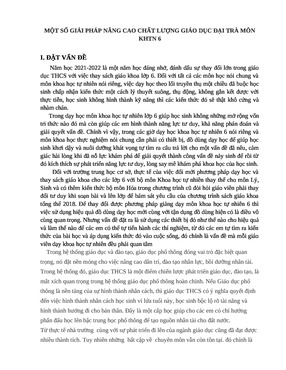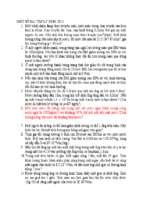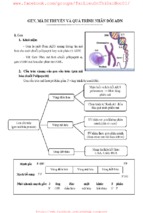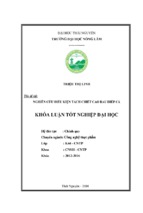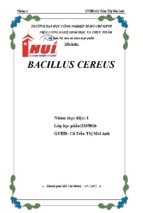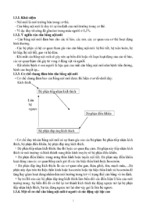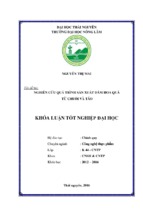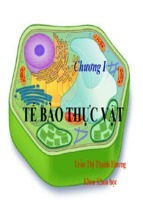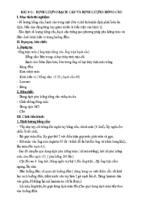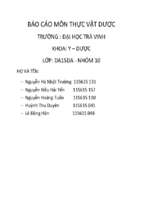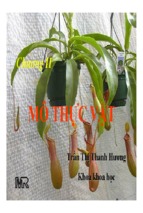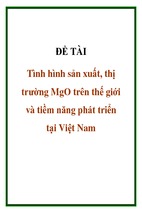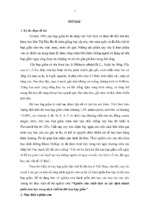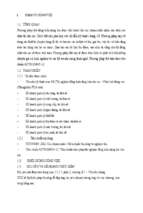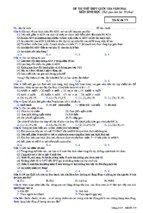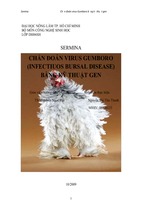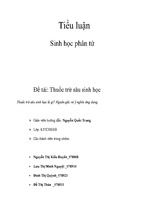Citrus Genetics, Breeding and Biotechnology
This page intentionally left blank
Citrus Genetics, Breeding and
Biotechnology
Edited by
Iqrar Ahmad Khan
CABI is a trading name of CAB International
CABI Head Office
Nosworthy Way
Wallingford
Oxfordshire OX10 8DE
UK
Tel: +44 (0)1491 832111
Fax: +44 (0)1491 833508
E-mail:
[email protected]
Website: www.cabi.org
CABI North American Office
875 Massachusetts Avenue
7th Floor
Cambridge, MA 02139
USA
Tel: +1 617 395 4056
Fax: +1 617 354 6875
E-mail:
[email protected]
© CAB International 2007. All rights reserved. No part of this publication may be
reproduced in any form or by any means, electronically, mechanically, by
photocopying, recording or otherwise, without the prior permission of the
copyright owners.
A catalogue record for this book is available from the British Library, London, UK.
A catalogue record for this book is available from the Library of Congress,
Washington, DC.
ISBN-13: 978 0 85199 019 4
Typeset by MRM Graphics Ltd, Winslow, Bucks.
Printed and bound in the UK by Biddles Ltd, Kings Lynn.
Contents
Contributors
Preface
vii
ix
1
Citrus Breeding
I.A. Khan and W.J. Kender
1
2
A Comprehesive Citrus Genetic Improvement Programme
F. G. Gmitter Jr, J.W. Grosser, W.S. Castle and G.A. Moore
9
3
Origin and Taxonomy
E. Nicolosi
19
4
Citrus Germplasm Resources
R.R. Krueger and L. Navarro
45
5
Nuceller Embryony
J.L. Kepiro and M.L. Roose
141
6
Cytogenetics
M.J. Jaskani, M. Omura and I.A. Khan
151
7
Haploidy
M. A. Germanà
167
8
Seedlessness and Ploidy Manipulations
P. Ollitrault, F. Luro and M. Yamamoto
197
9
Somaclonal Variation in Sweet Orange
J.W. Grosser, X.X. Deng and R.M. Goodrich
219
Somatic Hybridization
P. Ollitrault, W. Guo and J.W. Grosser
235
10
v
vi
11
Contents
Microprotoplast-mediated Chromosome Transfer and its Potential for
Citrus Breeding
E.S. Louzada
261
12
Mapping and Marker-assisted Selection
M.L. Roose
275
13
Cloning and Characterization of Disease Resistance Genes
F.G. Gmitter Jr, Z. Deng and C. Chen
287
14
Genetic Transformation of Citrus for Pathogen Resistance
V.J. Febres, R.F. Lee and G.A. Moore
307
15
Genetic Transformation
329
L. Peña, M. Cervera, R. Ghorbel, A. Domínguez, C. Fagoaga, J. Juárez, J.A. Pina
and L. Navarro
16
Mutation Breeding
M.L. Roose and T.E. Williams
345
17
Shoot-tip Grafting In vitro
L. Navarro and J. Juárez
353
Index
365
Contributors
Castle W. S., University of Florida, Institute of Food and Agricultural Sciences Citrus
Research and Education Center, Lake Alfred, FL 33850, USA
Cervera M., Departamento Protección Vegetal y Biotecnología, Instituto Valenciano de
Investigaciones Agrarias (IVIA), Apartado Oficial, 46113 Moncada, Valencia, Spain
Chen C., University of Florida, Institute of Food and Agricultural Sciences Citrus Research
and Education Center, Lake Alfred, FL 33850 USA
Deng X. X., Citrus Research Institute, Hauzhong Agricultural University, Wuhan 430070,
PR China
Deng Z., University of Florida, Institute of Food and Agricultural Sciences, Gulf Coast
Research and Education Center, Bradenton, FL 34203, USA
Domínguez A., Departamento Protección Vegetal y Biotecnología, Instituto Valenciano de
Investigaciones Agrarias (IVIA), Apartado Oficial, 46113 Moncada, Valencia, Spain
Fagoaga C. J., Departamento Protección Vegetal y Biotecnología, Instituto Valenciano
de Investigaciones Agrarias (IVIA), Apartado Oficial, 46113 Moncada, Valencia,
Spain
Febres V. J., University of Florida, Horticultural Sciences Department, Plant Molecular
and Cellular Biology Program, PO Box 110690, Gainesville, FL 32611, USA
Germanà M. A., Dipartimento SENFIMIZO Sezione di Frutticoltura Mediterranea,
Tropicale e Sutropicale, Facolta di Agraria, Università degli Studi di Palermo, Viale
delle Scienze, 11, 90128 Palermo, Italy
Ghorbel R., Departamento Protección Vegetal y Biotecnología, Instituto Valenciano de
Investigaciones Agrarias (IVIA), Apartado Oficial, 46113 Moncada, Valencia, Spain
Gmitter F. G. Jr, University of Florida, Institute of Food and Agricultural Sciences Citrus
Research and Education Center, Lake Alfred, FL 33850, USA
Goodrich R. M., University of Florida, IFAS, Citrus Research and Education Center, 700
Experiment Station Road, Lake Alfred, FL 33850, USA
Grosser J. W., University of Florida, Citrus Research and Education Center (CREC), 700
Experiment Station Road, Lake Alfred, FL 33850, USA
Guo W., National Key Laboratory of Crop Genetic Improvement, Hauzhong Agricultural
University, Wuhan 430070, PR China
Jaskani M. J., Institute of Horticultural Sciences, University of Agriculture, Faisalabad
38040, Pakistan
Juárez J., Instituto Valenciano de Investigaciones Agrarias (IVIA), Apartado Oficial, 46113
Moncada, Valencia, Spain
vii
viii
Contributors
Kender W. J., University of Florida, Citrus Research and Education Center (CREC), 700
Experiment Station Road, Lake Alfred, FL 33850, USA
Kepiro J. L., Department of Botany and Plant Sciences, University of California, Riverside,
CA 92521, USA
Khan I. A., Institute of Horticultural Sciences, University of Agriculture, Faisalabad 38040,
Pakistan and Nuclear Institute for Agriculture and Biology, Faisalabad, Pakistan and
Sultan Qaboos University, Muscat, Oman
Krueger R. R., USDA-ARS National Clonal Germplasm Respository for Citrus and Dates,
1060 Martin Luther King Blvd, Riverside, CA 92507, USA
Lee R. F., USDA-ARS National Clonal Germplasm Respository for Citrus and Dates, 1060
Martin Luther King Blvd, Riverside, CA 92507, USA
Louzada E. S., Texas A&M University-Kingsville Citrus Center, 312 N, International Blvd,
Weslaco, TX 78596, USA
Luro F., SRA, INRA/CIRAD, San Giuliano, 20230 San Nicolao, France
Moore G. A., University of Florida, Horticultural Sciences Department, Plant Molecular
and Cellular Biology Program, PO Box 110690, Gainesville, FL 32611 USA
Navarro L., Instituto Valenciano de Investigaciones Agrarias (IVIA), Apartado Oficial,
46113 Moncada, Valencia, Spain
Nicolosi E., Dipartmento di OrtoFloroArboricoltura e Tecnolgie Agroalimentari,
University of Catania, Italy
Ollitrault P., Center for International Cooperation in Agricultural Research for
Development (CIRAD), Avenue Agropolis TA 71/09, 34398 Montpellier, Cedex 5,
France
Omura M., National Agricultural Research Organization (NARO), Okitsu 458–6, Shimizu,
Shizuoka, 424–0292, Japan
Peña L., Departamento Protección Vegetal y Biotecnología, Instituto Valenciano de
Investigaciones Agrarias (IVIA), Apartado Oficial, 46113 Moncada, Valencia, Spain
Pina A., Departamento Protección Vegetal y Biotecnología, Instituto Valenciano de
Investigaciones Agrarias (IVIA), Apartado Oficial, 46113 Moncada, Valencia, Spain
Roose M. L., Department of Botany and Plant Sciences, University of California, Riverside,
CA 92521, USA
Williams T. E., Department of Botany and Plant Sciences, University of California,
Riverside, CA 92521, USA
Yamamoto M., Faculty of Agriculture, Kagoshima University, 1-21-24, Korimoto,
Kagoshima, 890-0032, Japan
Preface
Citrus fruits are regarded as major household items in more than 100 countries around the
world. The world juice industry is also dominated by citrus juices. Citriculture is the
foundation for the livelihood of millions of farm and industrial workers, entrepreneurs
and businesses. There is a rich endowment of knowledge and technologies developed by
dedicated researchers and academics around the world which addresses the issues faced
by the citrus industry worldwide. Integration and application of knowledge from different
disciplines has made its impact by guiding growers and investors to grow more and better
citrus. Yet, we can see that the major citrus cultivars grown in different parts of the world
are not the product of systematic breeding efforts. This book is intended to provide consolidated information on citrus breeding in the era of biotechnology which is likely to
hasten the pace of variety development aimed at resolving the problems faced by grove
owners growing currently available cultivars.
Citrus breeders and geneticists have pursued development of new cultivars for nearly
a century. They do have clear goals to achieve. But, the traditional techniques have simply
been insufficient to achieve the desired goals within reasonable time frames. The early
researches focused on botanical and taxonomic subjects followed by interest in cytogenetics. The knowledge base has strengthened, but the outcome, in the form of commercially successful varietal releases, has remained slow, with a few success stories among
rootstocks and fewer among scion cultivars. The recent advances in genetics, molecular
biology and biotechnology have changed the pace of citrus breeding and genetics research.
New approaches allow recombination within a broader and better understood germplasm
pool, and more efficient selection methods have been developed for many traits. Progress
has been also accelerated by the ease of communications via electronic media.
The scientific community is better organized than it was 50 years ago. The
International Society of Citriculture has been holding its congresses at regular intervals
since 1968. The amount of information presented on genetic improvement has grown
manifold. There is hope that the flow of materials will follow the trends in the flow of
information.
The idea of this book evolved from discussions held during citriculture congresses at
Orlando, Florida (in 2000) and then at Agadir, Morocco (in 2004). Nearly all active citrus
breeders of the world were willing to join hands to consolidate up-to-date information to
accelerate citrus breeding. The subjects covered in the book are focused on citrus while
ix
x
Preface
providing information equally useful to the breeders of other tree crops. This will also help
students of genetics and breeding identify appropriate applications of biotechnology in
citrus breeding. While providing information on future avenues, the authors have also
reviewed the past progress and achievements ensuring continuity of the subject. Several
chapters include protocols for novel techniques that should facilitate their broader application by citrus breeders.
Many colleagues at CREC-Lake Alfred, where most of the editorial work was undertaken, helped in vetting the drafts. While the ideas and refereeing help from many is
acknowledged, the editor takes the responsibility for errors and omissions. Patience of
CABI management and staff has been a source of encouragement. Many thanks to them for
doing an excellent job of compilation. This task could not have been accomplished without support from the Sultan Qaboos University, Muscat. It is hoped that the book will
prove beneficial to a wide range of readership.
Iqrar Ahmad Khan
1 Citrus Breeding: Introduction and
Objectives
IQRAR A. KHAN
AND
WALTER J. KENDER
Institute of Horticultural Sciences, University of Agriculture, Faisalabad 38040,
Pakistan and Nuclear Institute for Agriculture and Biology, Faisalabad, Pakistan
As our early ancestors evolved from the
process of nomadic food gathering to developing permanent food sources, crop breeding became an established practice. Over
the centuries, humans selected, propagated
and disseminated useful species that they
chose to cultivate to feed the expanding
populations. The hundreds of fruits, vegetables and grains that are now found on the
supermarket shelves are each the result of
the activities of plant breeders.
In 1865, the discovery of Gregor
Mendel’s laws of heredity became a turning
point in the founding of the science of
modern genetics, which transformed plant
breeding into a modern scientific discipline. Mendel’s critical and painstaking
experiments allowed other plant breeders
to conduct even more advanced studies on
hybridization, which evolved into a
remarkable success story. Consider the
abundance of nutritious cultivars, the
development of hybrid vigour in agronomic
crops such as sorghum and maize, the
development of short stature wheat and rice
cultivars leading to the Green Revolution
and elimination of extensive crop failures
caused by southern corn leaf blight, or
wheat rust or historic potato blight.
Until Mendel’s paper on inheritance and its
rediscovery at the turn of last century, plant
breeding was based on traditional knowledge. Selection of desirable phenotypes
was the primary means of perpetuating
species. Plant breeding, now a scientific
discipline, has resulted in major changes in
how we feed the world’s population
through superior cultivars.
It can be said that the successful development of commercial crop industries
around the world is directly related to the
success of plant breeding programmes. The
subject of citrus breeding and allied techniques has been reviewed previously
(Cameron and Frost, 1968; Soost and Roose,
1996; Grosser and Gmitter, 2005). This book
is a consolidation of the current status of
science and technology relevant to citrus
breeding.
Outlook
Tracking the ancestry of citrus is a complex
process because of the great diversity and
the distant centres of origin. Indeed, the
evolution from wild citrus of Asia to
modern day cultivars took hundreds of
© CAB International 2007. Citrus Genetics, Breeding and Biotechnology (ed. I.A. Khan)
1
2
I.A. Khan and W.J. Kender
thousands of years. Now grown in more
than 100 countries in tropical, subtropical
and Mediterranean climates, citrus (including oranges, grapefruit, tangerines and mandarins, and lemons and limes) is the
leading fruit crop grown in the world. In
2004, world production of citrus was
108,535,000 Mt (www.fao.org) which is
dominated by oranges (Fig. 1.1). Brazil and
the USA (Florida and California) were leading producers of sweet oranges. The USA is
the primary producer of grapefruit. China,
Spain and Japan produce 65% of the tangerines grown in the world. Lemons are
produced primarily in Argentina, Spain
and the USA, while Mexico is the largest
producer of small fruited limes. Lime is
also a traditional crop in South Asia and the
Middle East. While consumers are generally familiar with the edible citrus types,
there is an equally large component of nonedible citrus used as rootstocks for successful
production
of
edible
citrus.
Additionally, many citrus species have
industrial significance as a raw material for
cosmetic and pharmaceutical products.
In general, the citrus production areas
are located within 35° north and south of
the equator. The main citrus regions, how-
ever, are in the subtropics, which are more
than 20° north or south of the equator. As
with most agricultural crops, many factors
are known to limit the production and processing of citrus. Most are dependent on
problems related to scion and rootstock
deficiencies. Major constraints to citrus
production involve management inefficiencies, susceptibility to pests and diseases,
and environmental challenges. These lead
to increasing production costs, declining
labour supply in many parts of the world
and urban encroachment, especially on the
most productive farm lands. Thus, new and
improved scion and rootstock cultivars
aimed at controlling these production and
marketing constraints have been the primary aim of citrus breeding efforts.
The development of new and improved
citrus cultivars by conventional methods is
a slow and costly process. It may take as
long as 20–35 years or longer to release a
new cultivar from the time of making the
cross. Kinnow mandarin was bred and
released at the University of CaliforniaCitrus Research Center, Riverside (Frost,
1935). The parental cross was made in 1915
and official release took 20 years. However,
it took another period of more than 30 years
Fig. 1.1. Proportion of citrus fruits produced in the world.
Introduction and Objectives
before Kinnow became a successfully
grown commercial cultivar in the Punjab
region of Pakistan and India.
Several serious obstacles exist that
hamper citrus hybridization. For example:
(i) citrus is highly heterozygous; (ii) its
unique reproductive biology such as
apomixis and embryony; (iii) pollen and
ovule sterility causing incompatibility; (iv)
a long juvenile period taking as long as
5–10 years to express first flowering; and (v)
adventitious embryos in the nucellar of
developing ovules limit hybrid production.
In developing seeds of polyembryonic cultivars, nucellar embryos compete with
zygotic embryos. In addition to the long
generation cycle, large seedling populations
are needed (depending on species) that
require extensive field space and labour.
The first formal citrus breeding programme was started by USDA in Florida in
1893 (Cooper et al., 1962) which is still
expanding. The University of California
established the Citrus Research Center,
Riverside in 1907. The University of
Florida initiated its citrus breeding programme in 1924 which is now one of the
largest breeding programmes, centred at the
Citrus Research and Education Center, Lake
Alfred (CREC). Today, there are numerous
citrus breeding programmes spread in all
major citrus-producing countries.
Most of the present day scion and rootstock cultivars of citrus are the progeny of
chance seedlings or a mutant branch of a
tree, called ‘budsports’. The commercially
successful cultivars now grown have
resulted from the selection, propagation
and advanced testing of thousands of such
superior chance seedlings. This process of
screening of potentially superior scion and
rootstock candidates under commercial
conditions involves a critical evaluation of
tree performance and fruit quality traits.
The above-mentioned breeding programmes played a major role in shaping
today’s citrus industry by providing information on the use of numerous scion and
rootstock cultivars.
Breeders identify the most advanced
candidates selected from initial screens and
3
usually propagate them on certain rootstocks, establish them in replicated blocks
in different regions and environmental conditions, and compare them with known cultivars. After such rigorous evaluation of
horticultural performance, economic analysis and test marketing for fresh market and
processing use, superior survivors may
finally result in the introduction of a named
variety.
In some citrus breeding programmes,
new selections are patented for economic
and scientific protection. After receiving a
patent, the new cultivar may be licensed to
nurseries to multiply the trees for commercial distribution. Certification programmes
may be established to ensure that diseaseand pest-free budwood is provided to commercial nurseries.
Achievements in Cultivar Improvement
Although citrus breeding programmes have
existed in citrus-producing areas around
the world for many years, most commercially important scion and rootstock cultivars were developed by means of selection
of mutations or by chance seedlings.
Relatively few have arisen from conventional citrus breeding. Examples of cultivars from breeding programmes in the USA
are the mandarin hybrids such as tangelos
(mandarin × grapefruit hybrids) and tangors
(mandarin × sweet orange hybrids) – specifically Minneola, Orlando, Nova, Page,
Robinson, Sunburst, Fall Glo and
Ambersweet. Swingle citrumelo (grapefruit
× trifoliate orange hybrid) and sweet orange
× trifoliate orange hybrids Carrizo and
Troyer citranges are examples of citrus rootstocks originating from breeding efforts.
Three mandarin varieties were released
from the Citrus Research Center, Riverside
(Frost, 1935). Only one of the three, Kinnow
mandarin (King × Willow Leaf), became a
major success in the subcontinent of India
and Pakistan. That reflects the value of
international exchange of breeder’s efforts.
The process of release of new cultivars has
now become more frequent, with expected
4
I.A. Khan and W.J. Kender
impact on the citrus industry in the years to
come.
Breeding Objectives
Depending on the needs of a specific region
of the world, the objectives of citrus breeding programmes may vary considerably. For
example, some of the following objectives
may have high priority in some regions and
low or no priority in others.
Scion breeding
See Table 1.1 for the objectives of scion
breeding.
Rootstock breeding
Nearly all commercial citrus in the world is
grown as grafted trees, with the scion cultivar budded on a selected rootstock cultivar.
A good scion and rootstock combination
supports development of trees that bear
large quantities of high quality fruit. Such a
stoinic combination can maintain health
and productivity for 50 years or more with
modest management. However, many available rootstocks are inadequate to meet the
emerging needs and challenges. A large
proportion of the problems faced by the
citrus industry could be overcome by use of
improved rootstocks (Wutscher and Hill,
1995; Bowman, 2000).
Benefits of the rootstock
EARLY BEARING.
Budding a mature scion on to
a rootstock plant takes advantage of the
scion variety that has already passed juvenility which can start production within
1–2 years of planting in the grove, whereas
citrus seedlings typically require many
years to begin bearing fruit when grown
from seed (3–15 years, depending on the
species). In addition, citrus seedlings often
maintain undesirable juvenile characteristics, such as excessively large thorns, for
many years after fruiting begins.
TRUE TO TYPE. Propagation by budding/grafting on to a rootstock ensures that the trees
will produce fruit that is identical to the
source of budwood and thus allow plantings of a uniform type.
APOMIXIS. Most citrus rootstocks are apomictic, which can produce uniform plants from
seed at a low cost. Seed propagation costs
less and produces more vigorous and uniform nursery stock than by cuttings or
tissue culture.
COMBINING TRAITS. Propagating citrus through
budding on a rootstock is the benefit that
probably has the most relevance in terms
of rootstock breeding. It allows the graft
creation of a tree that combines the
best genetic fruit characteristics above
ground with the strongest genetic root
traits (adaptations to soil type, tolerance
to salinity, resistance to diseases and
nematodes, etc.) below ground as two
separate units. Creating such a combination
Table 1.1. Objectives of scion breeding.
Tree performance
Fruit characteristics
Yield
Exterior appearance
Cold hardiness
Size and shape
Adaptation to adverse climatic and Quality (ss/acid ratio)
soil conditions
Juice content,
flavour/colour
Adaptation to mechanical harvest Ease of peeling
Disease and pest resistance
Seedlessness
Season of ripening
Postharvest of fruit
Handling for fresh market
Economic and cultural importance
Processing quality (processed into frozen
concentrate or single strength juice
products)
Storage life
Juice content and composition
Introduction and Objectives
of genetic traits in a single (self-rooted) genotype would be considerably more difficult.
Problems created by using a rootstock
EXPERTISE. Budding/grafting for propagation
requires a significant expertise and adds
cost when compared with seed propagation.
LACK OF APOMIXIS.
A uniform nursery stand
typically relies upon nucellar polyembryony (Frost and Soost, 1968) which results in
the production of genetically uniform
clonal seedlings. If a rootstock cannot be
propagated uniformly by seed, clonal propagation must be accomplished by cuttings
or tissue culture. The problem is further
compounded when a rootstock strain produces a mixture of nucellar and zygotic
seedlings which will require a rouging procedure (Khan and Roose, 1988).
GRAFT-TRANSMISSIBLE DISEASES. Vegetative propagation of the scion by budding can carry
many virus and virus-like diseases and other
pathogens. Hence, citrus has a long list of
graft-transmissible pathogens that can debilitate trees and must be carefully excluded
from propagation material (Roistacher, 1991).
GRAFT INCOMPATIBILITY. An important problem
associated with using a rootstock is potential graft incompatibility between certain
rootstocks and scions. Although generally
not well understood, graft incompatibilities
apparently arise when there is a conflict
between the physiology of the rootstock
and scion that causes the tree to grow
5
weakly or die. A similar reaction can be
induced by some virus diseases, such as
incompatability which occurs when trees of
sweet orange (Citrus sinensis) on sour
orange (C. aurantium) are infected by isolates of citrus tristeza virus (Bowman and
Garnsey, 2000).
ROOTSTOCK AFFECTS THE SCION. It must also be
kept in mind that rootstock does affect
many important traits of the scion grafted
on to it, including tree size, productivity
and fruit quality. Hence, a rootstock may
degrade the tendency of a scion to be highly
productive or to yield good quality fruit.
One example of this is the rough lemon (C.
jambiri) rootstock, which produces a vigorous and highly productive tree, but also
induces the scion to yield low quality, low
sugar fruit.
The Rootstock Development Process
Development of improved rootstocks is a
long and many-faceted process. Typically,
it takes 30–35 years from the time a new
rootstock is created by cross-hybridization
until it is released to the local citrus industry for commercial use. Commonly pursued
objectives of rootstock breeding are listed in
Table 1.2.
Molecular Genetics and Biotechnology
Citrus breeding and genetics has been fortunate to have an early and continuing history
Table 1.2. Commonly pursued objectives of rootstock breeding.
Apomixis
Improved productivity
Tree size reduction
Adaptation to soil conditions (salt, calcareous soils)
Improvement in poor nutrition
Resolution of bud union problems
Resistance to diseases (Phytophthora, citrus tristeza virus, citrus blight, etc.)
Resistance to soil borne pests (diaprepes, nematodes, etc.)
Improvement in fruit quality
High seed production
6
I.A. Khan and W.J. Kender
of meeting the needs of a changing industry
through scientific research on genetic techniques. A new generation of scientific
methodologies is now available for the
study of genomics. It is possible to locate
genes rapidly on chromosomes, to isolate
genes from plants to study their function at
the molecular level, to modify genes and to
reintroduce them into living organisms.
This is, indeed, a far cry from Gregor
Mendel’s 19th century tenant that plant
characters are controlled by discrete hereditary units – which are now called genes.
Modern genetic engineering evolved
from the discovery of DNA as the genetic
material by Avery and co-workers followed
by Watson and Crick’s discovery in 1953 of
the double helix structure of deoxyribonucleic acid (DNA). Since then, modern day
geneticists have been able to use more precise and sophisticated technology to overcome the barriers and greatly to facilitate
genetic procedures.
It is essential that future programmes for
citrus cultivar improvement emphasize
understanding the inheritance of fundamental qualitative and quantitative traits and also
be comprehensive. For example, the study of
genomics involves a molecular-based knowledge of the structure and function of genes.
Such information will afford a precise use of
such traits in the tree and fruit. Numerous
examples can be cited where genomic technology has benefited plant improvement
efforts. For example, in citrus, the long duration of field evaluation is a major obstacle for
developing specific characters such as tree
size, yield, disease and insect resistance. The
use of marker-assisted selections linking
molecular markers to genes, which control
important traits, will significantly reduce the
time required to screen mature tree characters. Other tools of biotechnology have been
employed with equal ease to facilitate the
progress of work in citrus breeding programmes. Shoot-tip grafting techniques have
been used for sanitation of virus-infected
germplasm, which has allowed wide dissemination and conservation of parental stocks.
Cytogenetics
Cytogenetic investigations in citrus have
been restricted due to very small chromosome size and little implication for ploidy
manipulations except for an interest in
triploid breeding for seedlessness. In recent
years, Citrus has been accepted as a model
for the application of somatic hybridization
and cybridization for crop improvement
(Khan and Grosser, 2004; Grosser and
Gmitter, 2005). Despite a huge variability in
citrus, evolution has been restricted at the
diploid level largely because of apomictic
seed propagation. Somatic hybridization
has offered a unique situation for citrus
breeders to pursue citrus evolution at
higher ploidy levels, particularly that based
on allotetraploid combinations (Grosser et
al., 1996).
Research Diversity
To understand better the scope and depth
of the citrus breeding/genetics research
being conducted in the world today, the
reader is encouraged to read the 2000
Proceedings of the International Society of
Citriculture (ISC) held in Orlando, Florida
(published in 2003) and ISC 2004 proceedings. Citrus breeders and geneticists presented a total of 114 papers in 2000 (71 oral
and 43 posters). Of the oral presentations,
topics included scion cultivar evolutions
(seven), rootstock cultivar evolutions
(eight), breeding (34), genetics and genes
(eight) and biotechnology (14). These
papers represented work done in over 20
different
citrus-producing
countries,
including the USA, Brazil, Spain, France,
China, Italy, Japan, Argentina, Cuba, South
Africa, Australia, Oman, Israel, Morocco,
Turkey, India, Pakistan, Egypt, Lebanon,
Korea and New Zealand. In 2004, the
number of genetics and breeding papers
went up to 126 where a major shift was
seen towards molecular genetics, genomics
and transgenic citrus research.
Introduction and Objectives
About this Book
The diversity and scope of global citrus
genetic research projects are impressive.
Preservation of Citrus Germplasm
Citrus geneticists are concerned over the
reported loss of citrus germplasm especially in the areas of origin. Such potential
losses must be addressed on a global and
cooperative basis before more valuable and
irretrievable citrus materials are lost forever. Breeding of citrus requires a large
diversity of citrus cultivars in a reliable and
protected source. Since such citrus populations are rare, worldwide, habitat destruction threatens existing materials. The FAO
sponsored Global Citrus Germplasm
Network recommended in 1996 that (i)
activities be initiated to identify the locations of gene banks of citrus and its relatives; (ii) it should be determined what
needs to be preserved in collections and
data banks; (iii) citrus germplasm should be
characterized; (iv) procedures to conserve
available and unique citrus germplasm
should be developed; and (v) citrus
germplasm should be evaluated and catalogued using molecular markers. Such
activities, if properly conducted, would
help ensure the availability of important
germplasm for use by future citrus breeders
and geneticists.
7
Basic knowledge in plant genetics and
biotechnology has opened the door to new
concepts and methodologies, which have
greatly advanced the scope and abilities of
the citrus breeder. To define the progress in
the field of citrus genetics, key scientists
working on citrus cultivar improvement
around the citrus-producing world have
combined their talents to write chapters in
areas of their expertise. Such information at
this time of the genetic revolution will be of
great value to the ‘students of citrus’. These
chapters characterizing the remarkable
advances made in recent times will point
out the success of past and current citrus
genome research and the need for continued financial support for such research in
the future.
The major topics covered in this book
are:
●
●
●
●
●
●
●
●
●
●
Origin and taxonomy
Germplasm resources and shoot-tip grafting
Cytogenetics
Somoclonal variation
Somatic hybridization and single chromosome transfer technology
Mutation breeding
Triploid hybrids (hybridization between
diploids and tetraploids)
Marker-assisted selection by linkage
maps
Gene cloning
Genetic transformation.
References
Bowman, K.D. (2000) New hybrid citrus rootstocks developed by US Department of Agriculture. In:
Proceedings of the International Society for Citriculture, IX Congress, p. 51.
Bowman, K.D. and Garnsey, S.M. (2000) Comparison of decline reaction from citrus tristeza virus infection
in trees on sour orange hybrid rootstocks. In: Proceedings of the International Society for Citriculture,
IX Congress, p. 996.
Cameron, J.W. and Frost, H.B. (1968) Genetics, breeding and nucellar embryony. In: Reuther, W., Batchelor,
L.D. and Webber, H.J. (eds) The Citrus Industry, Vol. 2. University of California, Berkeley, pp. 325–370.
Cooper, W.C., Reece, P.C. and Furr, J.R. (1962) Citrus breeding in Florida – past, present and future.
Proceedings of the Florida State Horticultural Society 75, 5–13.
Frost, H.B. (1935) Four new citrus varieties – the Kara, Kinnow and Wilking mandarins and the Trovita
orange. University of California Agricultural Experimental Station Bulletin 597.
8
I.A. Khan and W.J. Kender
Frost, H.B. and Soost, R.K. (1968) Seed reproduction: development of gametes and embryos. In: Reuther, W.,
Batchelor, L.D. and Webber, H.J. (eds) The Citrus Industry, Vol. 2. University of California, Berkeley,
pp. 290–324.
Grosser, J.W. and Gmitter, F.G., Jr (2005) Applications of somatic hybridization and cybridization in crop
improvement, with citrus as a model. In Vitro Cellular and Developmental Biology-Plant 41, 220–225.
Grosser, J.W., Mourao-Fo, F.A.A., Gmitter, F.G., Jr, Louzada, E.S., Jiang, J., Baergen, K., Quiros, A.,
Cabasson, C., Schell, J.L. and Chandler, J.L. (1996) Allotetraploid hybrids between Citrus and seven
related genera produced by somatic hybridization. Theoretical and Applied Genetics 92:577–582.
Khan, I.A. and Grosser, J.W. (2004) Regeneration and characterization of somatic hybrid plants of Citrus
sinensis (sweet orange) and Citrus micrantha, a progenitor species of lime. Euphytica 137, 271–278.
Khan, I.A. and Roose, M.L. (1988) Frequency and characteristics of nucellar and zygotic seedlings in three
cultivars of trifoliate orange. Journal of the American Society for Horticultural Science 113, 105–110.
Roistacher, C.N. (1991) Graft-transmissible Diseases of Citrus. FAO Publication, Rome.
Soost, R.K. and Roose, M.L. (1996) Citrus. In: Janick, J. and Moore, J.N. (eds). Fruit Breeding, Vol. I: Trees
and Tropical Fruits. John Wiley and Sons, Inc., pp. 257–323.
Wutscher, H.K. and Hill, L.L. (1995) Performance of ‘Hamlin’ orange on 16 rootstocks in east-central Florida.
HortScience 30, 41–43.
2 A Comprehensive Citrus Genetic
Improvement Programme
FRED G. GMITTER JR1, JUDE W. GROSSER1, WILLIAM S. CASTLE1
AND GLORIA A. MOORE2
1University
of Florida, Institute of Food and Agricultural Sciences, Citrus Research
and Education Center, Lake Alfred, FL 33850 USA; 2University of Florida, Institute of
Food and Agricultural Sciences, Department of Horticultural Science, Gainesville,
FL 32611 USA
Introduction
All the world’s citrus industries will benefit from genetic improvements leading to
the release of superior new rootstock and
scion cultivars. Improvements in pest and
disease resistance, tolerance of various
environmental stress factors, horticultural
performance and productivity, and fruit
quality characteristics should result in
greater economic returns to growers,
processors and shipper/packers by reducing input unit costs and increasing product
desirability and demand. Likewise,
improvements in fruit quality, nutritive
value and content of health-protective components should benefit consumers and
increase consumption of this well recognized, nutrient-rich fruit. Until recent
times, however, much of the process of
genetic improvement of citrus was based on
identification of chance mutations and
seedlings displaying useful characteristics.
Structured and targeted breeding programmes were generally inefficient and
ineffective because of a lack of genetic
knowledge of important traits, incomplete
understanding of the significance of taxonomic distinctions and relationships, and
the absence of breeding tools that could be
employed to achieve necessary and desired
goals. However, in the past two decades,
there has been a tremendous explosion in
the understanding of plant genetics and
genomes, as well as associated technologies
to enable application of new fundamental
knowledge to genetic improvement of crop
plants in general, and specifically of citrus;
this volume itself is a testament to that technological revolution, specifically as it
relates to citrus. As a consequence, a comprehensive approach to citrus genetic
improvement and cultivar development,
utilizing the most appropriate methods and
technologies to achieve given improvement
goals, makes the greatest sense.
The authors of this chapter are members of a team dedicated to developing
genetically superior new citrus cultivars, in
a comprehensive fashion. The individual
members bring diverse expertise to the
team, from fundamental genomics and
© CAB International 2007. Citrus Genetics, Breeding and Biotechnology (ed. I.A. Khan)
9
10
F.G. Gmitter Jr et al.
genetics, from tissue culture-based systems
of somatic hybridization and genetic transformation, from traditional breeding techniques frequently assisted by tissue culture
methods, to screening newly created materials for specific traits and characters in specialized challenges, and ultimately proving
the value of new selections to growers and
for commercial release following extensive
replicated field trials. The basic elements of
the University of Florida’s citrus genetic
improvement and cultivar development
programme are outlined in Fig. 2.1. All of
the research efforts of our team, whether
they are traditional breeding for multitrait
improvements or genetic experiments to
clone genes that can precisely modify a specific trait, are directed ultimately toward
the central and unifying goal of releasing
new and improved rootstock and scion cultivars for the industry. All forms of genetic
modification, listed in general terms in Fig.
2.1, yield new plants that represent a pool
of genetic diversity upon which screening
and selection are imposed to find and to
verify truly superior performing individuals for release as new cultivars.
Contributions from genomic research feed
into the process as cloned genes that can be
introduced to the pool via transformation;
alternatively, genomic research also leads
to the development of screening tools via
Fig. 2.1. Overview of the basic elements of the genetic improvement process for citrus.

